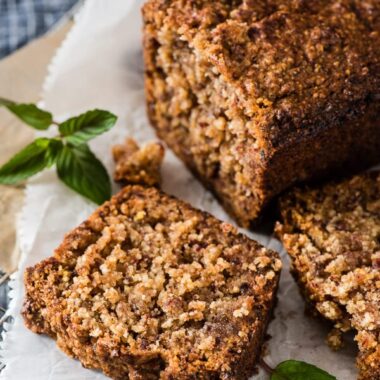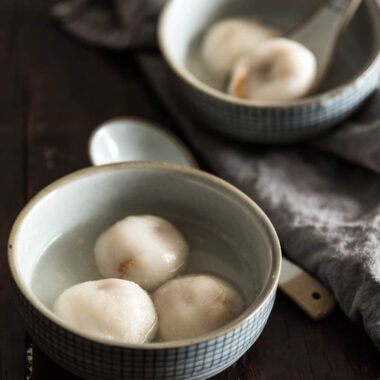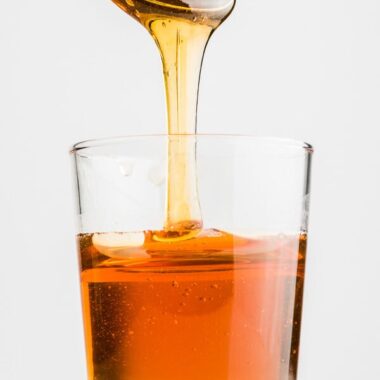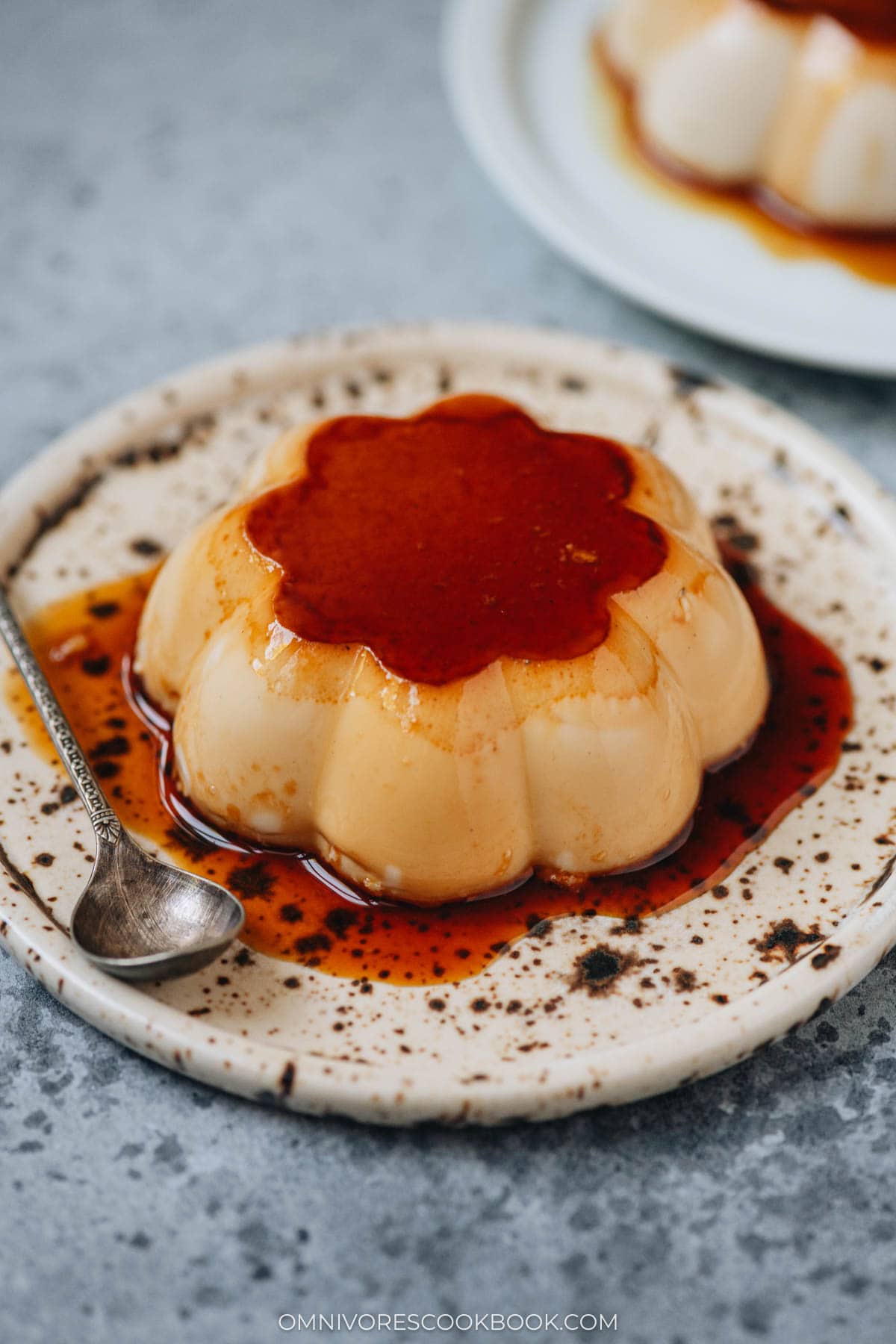
I love to use different types of tea in my desserts because the earthy and light bitterness of the tea balances so well with sweetness, adding depth of flavor to the dish. For example, matcha tiramisu, choux pastry with milk tea cream, and matcha cake all show you how to elevate your desserts using tea.
What is Hojicha Purin?
Purin is Japan’s take on crème caramel or flan – a soft, creamy custard served with a bittersweet caramel sauce. Unlike Western versions, Japanese purin tends to be lighter and less sweet, making it a perfect treat that’s indulgent but won’t weigh you down.
Hojicha, a green tea that’s roasted over high heat, has a warm, toasty aroma and low caffeine content. When steeped into the milk and cream base of purin, it lends a rich, nutty flavor that pairs beautifully with caramel and custard.
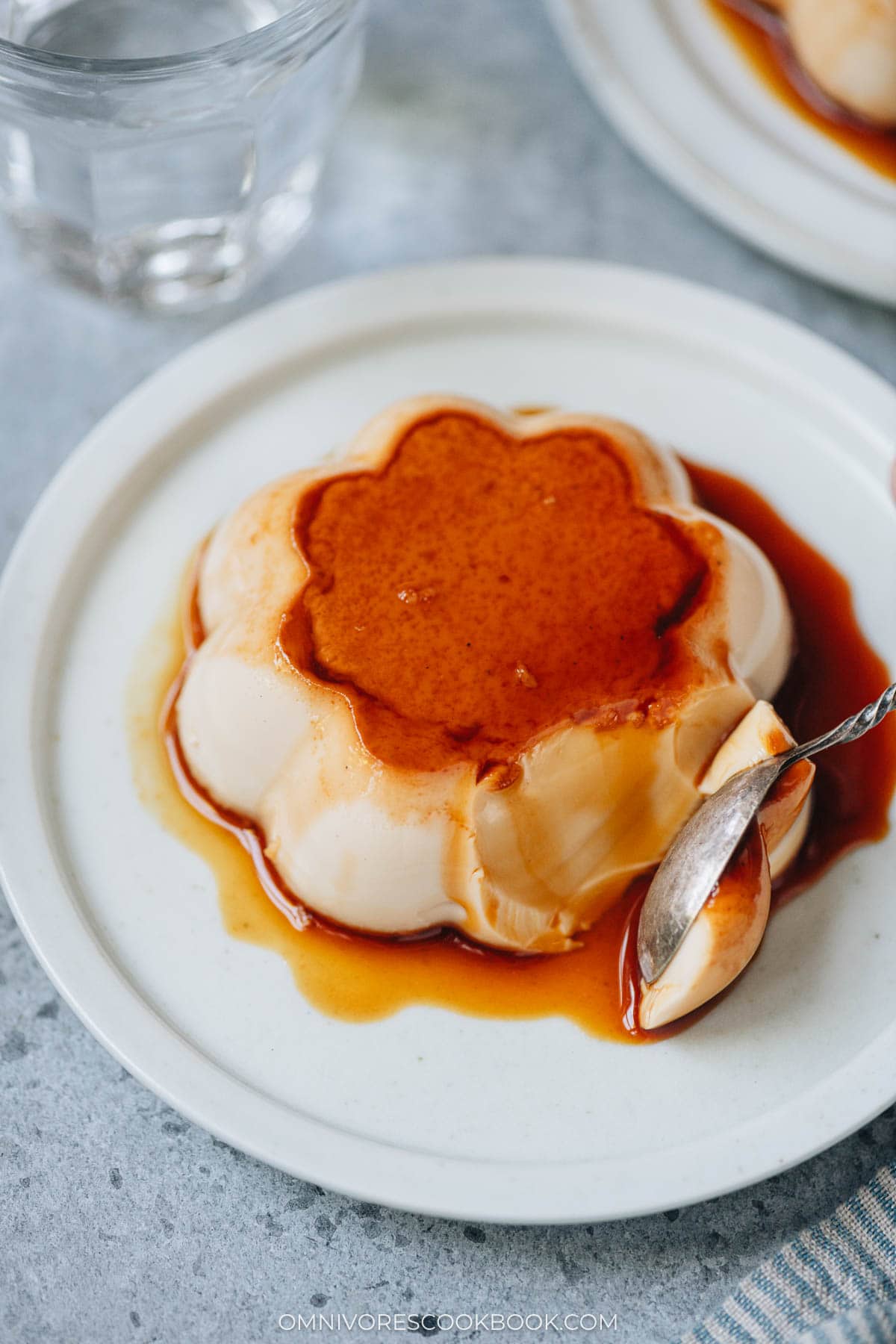
Ingredients
You only need 6 ingredients to make this hojicha purin.
- Sugar: This is separated into two parts – one for the caramel and one for the purin.
- Whole milk: It’s the main ingredient, creating the light and fluffy texture of the purin.
- Heavy cream: It adds creaminess to the purin.
- Eggs: They help to set the purin.
- Hojicha: The tea is infused into the milk and cream to add depth of flavor.
- Salt: It balances out the sweetness and adds dimension to the dessert.
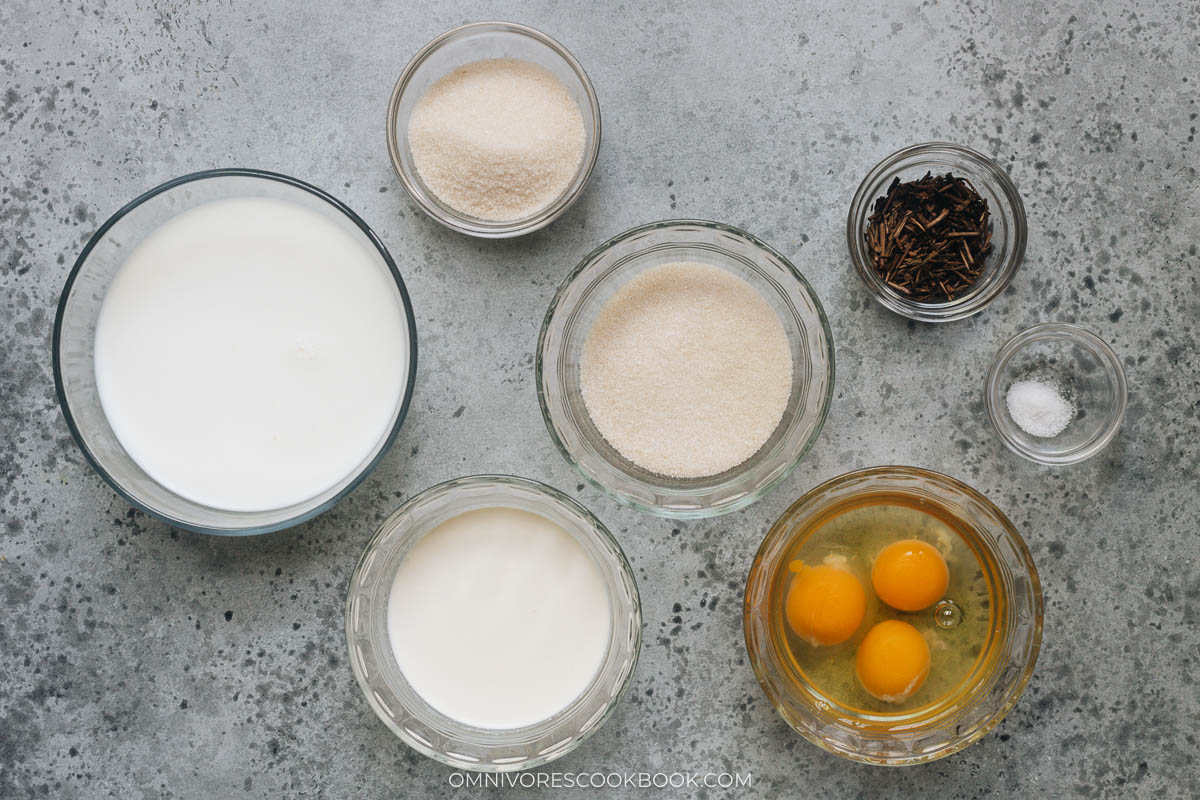
Special equipment
I used these aluminum cup cake molds to make the individual purin. I prefer an aluminum mold because it conducts heat well and it’s quite nonstick. These molds have a nice shape and create flower-shaped purin. You can use other types of molds, such as flan molds and pudding molds, to make this recipe. You can even use a 6” round cake pan to make a big purin.
Different molds will change the baking time
The baking time will change depending on the shape, size and material of the mold. For example, small molds made of aluminum require less cooking. But the same sized mold made of ceramic or glass might use a longer time. If making a large purin in a cake pan, the cooking time will increase as well.
How to make Hojicha purin
- First, make the carmel by heating the sugar in a small saucepan and stirring constantly until the sugar is fully melted and then turns a dark amber color. Pour the caramel into each mold.

- Infuse the hojicha tea by bringing the milk and heavy cream to a simmer, steeping the tea, then draining and removing the tea leaves.

- Whisk the sugar and eggs together until fully combined.
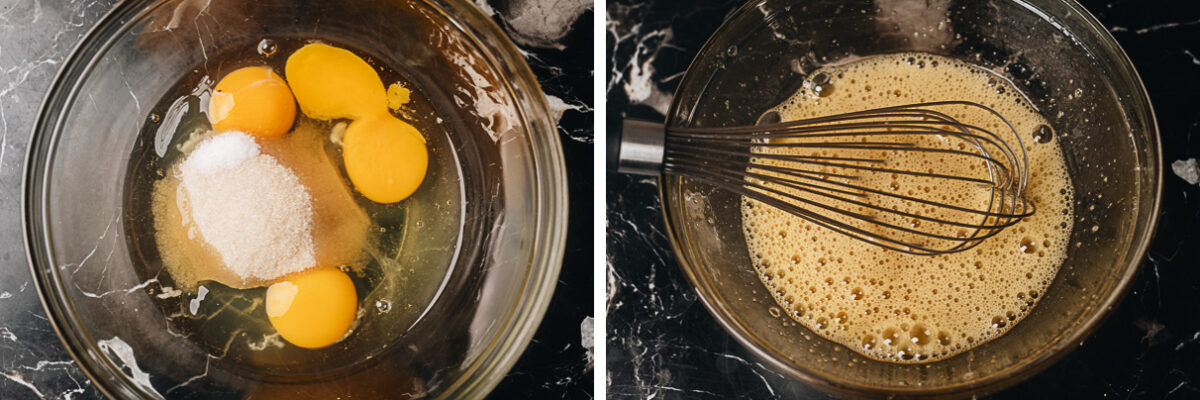
- Temper the eggs by slowly mixing in a small amount of the hojicha milk mixture, so the eggs won’t be cooked by the hot liquid. Then add the egg mixture back into the hojicha milk pot.
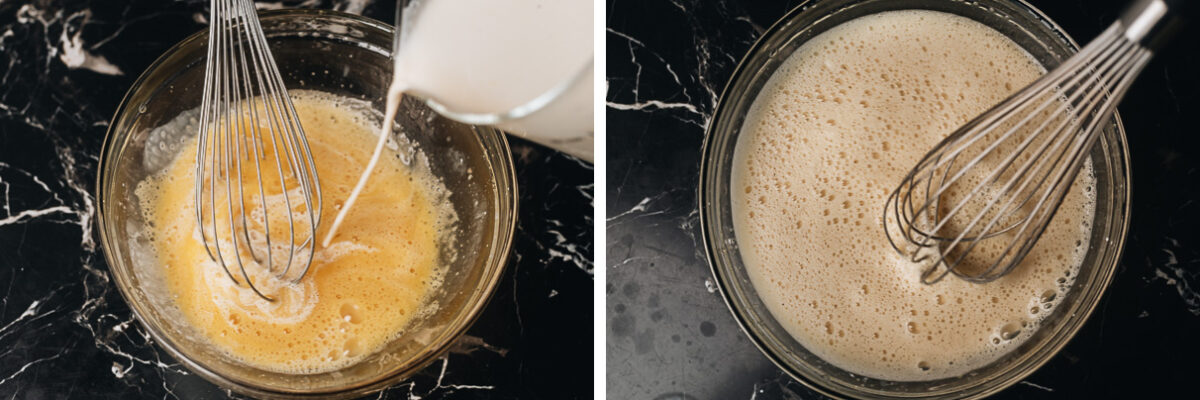
- Cook the mixture again over the stove for 30 seconds.
- Strain the mixture through a fine sieve to remove any solids for a silky smooth texture. Then pour it into individual molds.
- Place the molds into a large deep baking sheet and add hot water to make a water bath.

- Bake until the purin just sets. Then let it chill in the refrigerator until fully cooled before serving.
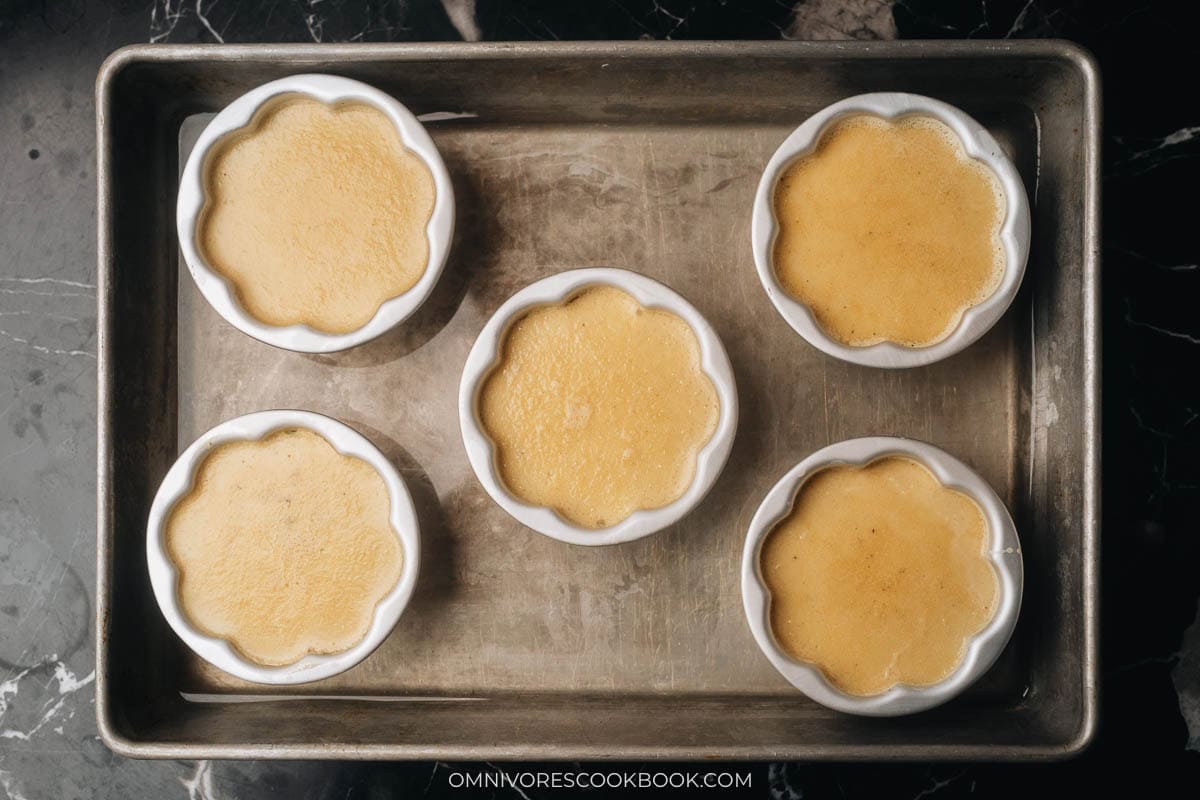
Not overcooking is the key to success
If overcooked, the purin will become grainy and tough. Since the cooking time can vary a lot depending on the mold you use and your actual oven temperature, it’s best to test the doneness by checking the purin periodically.
Tilt the mold lightly – it should not move. If there’s any liquid or the purin looks loose, bake it a little longer, 5 minutes at a time. The purin has a very soft and delicate texture, and it still jiggles a little in the center, it’s done.
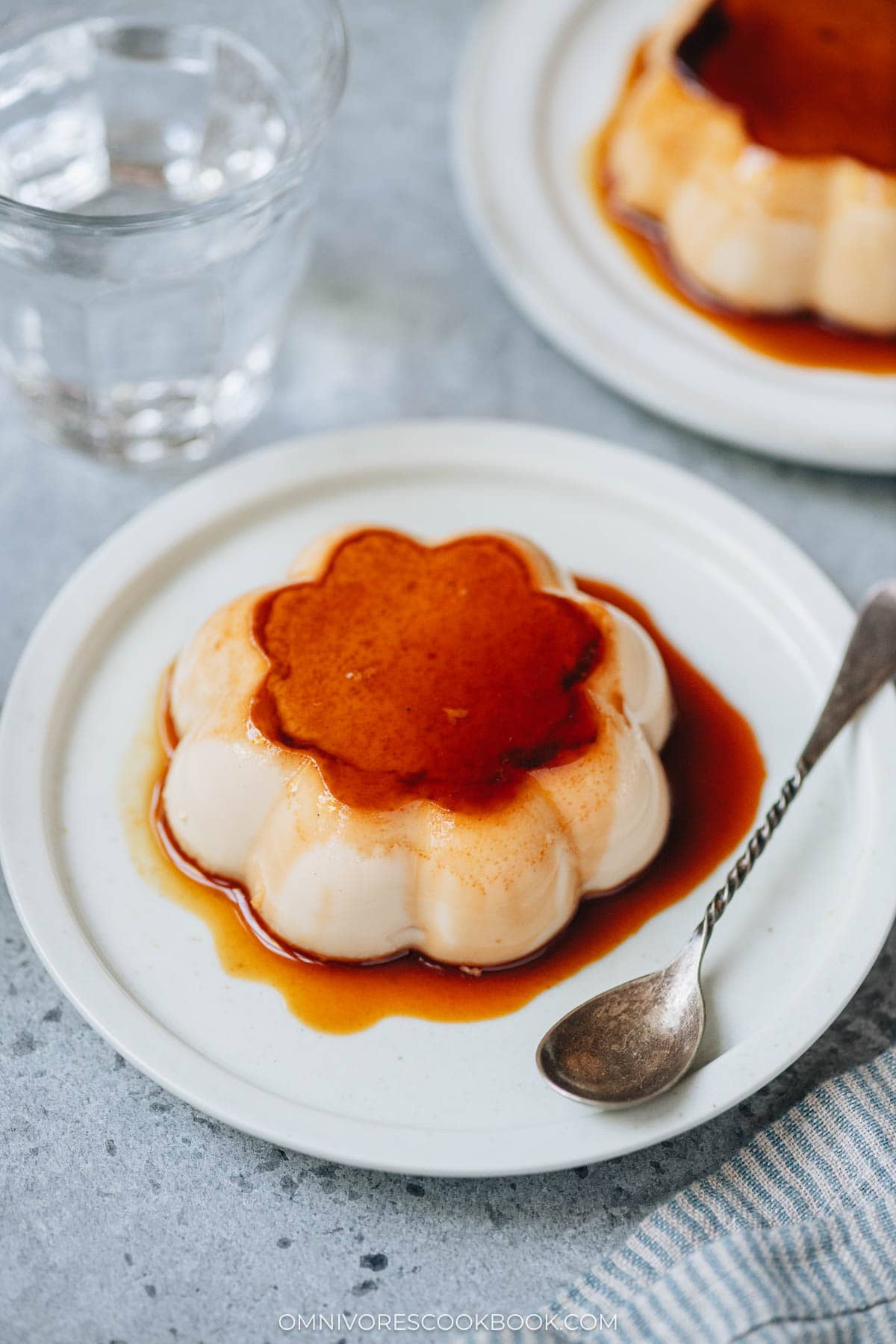
How to serve and store purin
When the purin has cooled off completely, you can remove it from the mold by flipping it onto a small serving plate. I enjoy serving hojicha purin with black coffee or hot tea.
If you don’t plan to serve the purin immediately, store them in their molds until ready to serve. Purin has a soft and delicate texture and its shape will slowly change once removed from the mold.
You can store the purin in the fridge for 2 to 3 days, but I recommend serving it the same day, no later than next day, for the best taste.
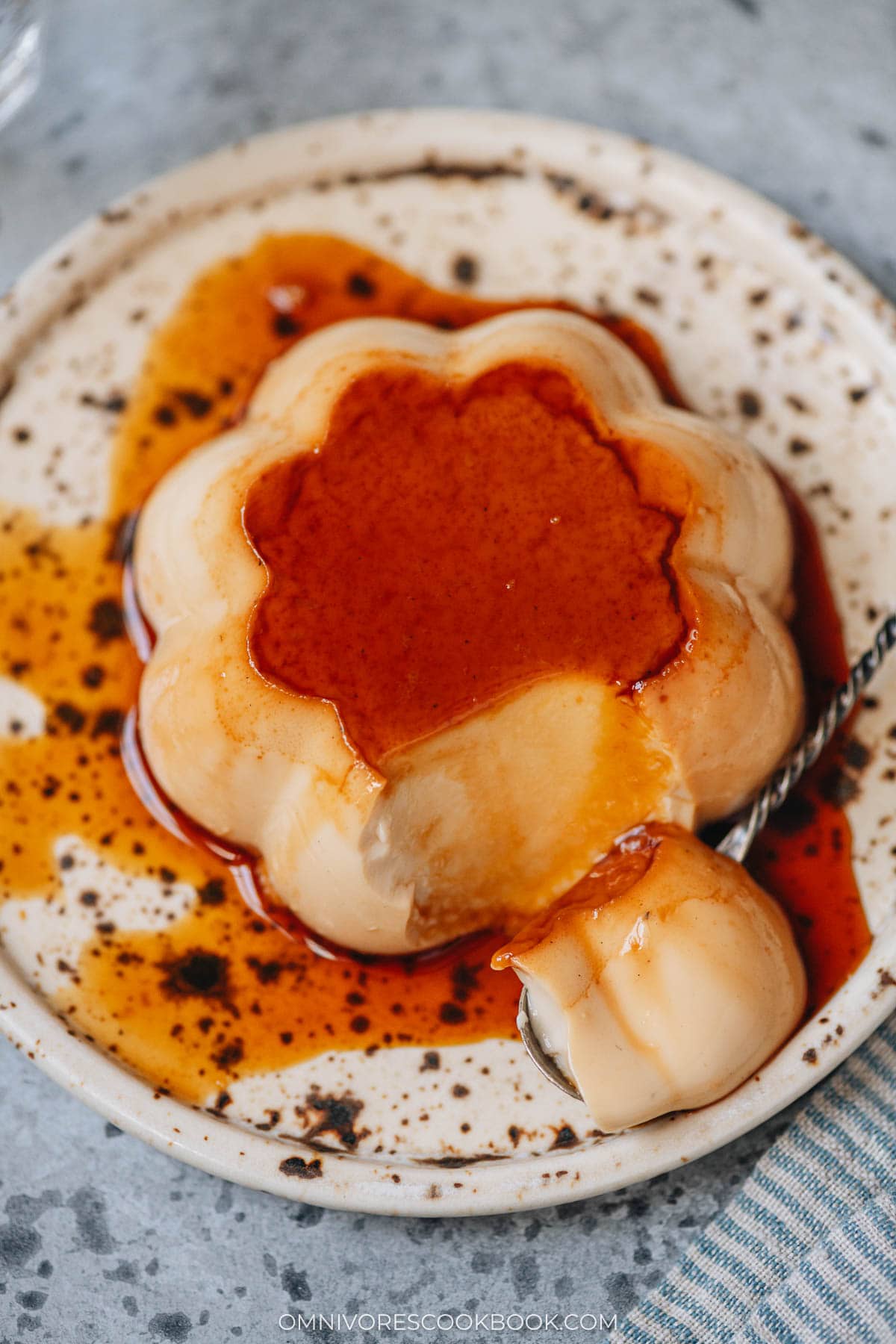
Frequently asked questions
What’s the difference between purin and flan or crème caramel?
Purin has a lighter texture and tastes less sweet. This is because purin uses whole milk and a small amount of heavy cream instead of evaporated milk and condensed milk to create the airy texture.
Why did my purin come out with bubbles or holes?
That usually means it was overcooked or cooked at too high a temperature. Cooking it in a water bath like this recipe helps avoid bubbles and holes.
Can I use milk alternatives (like soy, almond, or oat milk)?
Yes, but it may affect the texture. Whole milk gives purin its signature creamy, smooth finish.
Can I use a different kind of tea rather than hojicha?
Yes! Feel free to experiment with different flavors using the method in this recipe. A different tea such as earl grey or genmaicha could be a fun twist.
Chinese Cooking Made Easy
Are you new to this website? This free email series is a great place to start. I’ll walk you through a few of my most popular recipes and show you how and why they work. You’ll quickly start to cook better Chinese food in your own kitchen.
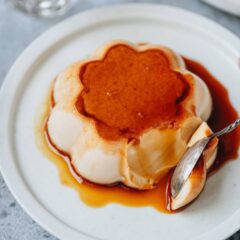
Hojicha Purin
Ingredients
Special equipment
- 6 aluminum cupcake molds (about 3 oz. each)
For the caramel
- 80 g (1/2 cup) granulated sugar
For the purin
- 375 g (1 1/3 cups) whole milk
- 100 g (1/2cup) heavy cream
- 3 large eggs
- 4 bags Hojicha tea (or 8 g loose leaf tea)
- 60 g ([/adjustable]1/3 cup) granulated sugar
- 1/4 tsp salt
Instructions
- Preheat the oven to 300°F (150°C).
- Prepare the caramel: Heat the 80g sugar in a small saucepan over medium heat, stirring frequently until sugar begins to melt, breaking up clumps with rubber spatula as they form. Continue cooking until all sugar is melted evenly, stirring occasionally as sugar begins to caramelize. Keep cooking until caramel turns dark amber, then immediately remove from heat and pour directly into molds, generously coating the bottom, and using less or more depending on the size of your molds.
- Prepare the custard: Heat the milk and heavy cream until very hot and just starting to simmer. Turn off heat, then add the tea bags. Let steep for 10 minutes, then remove tea bags, squeezing out all liquid.
- Meanwhile, bring a large pot of water to a boil and keep it on low.
- Bring the hojicha milk mixture back to a simmer. In the meantime, in a large heat bowl, whisk eggs with 60g sugar until slightly thoroughly combined.
- While whisking, add 1 ladleful of hot hojicha milk mixture to the egg mixture at a time, until about half of the milk mixture has been combined with the eggs. Slowly pour the egg mixture back into the pot with the remaining milk, and cook over low heat for 30 seconds, then remove from heat.
- Strain the custard through a fine mesh strainer back into the empty egg bowl, then portion it evenly into molds. Pop the bubbles on the surface by quickly passing over it with a long stemmed lighter or kitchen blowtorch. Or you can use a small spoon to remove the bubbles. Place the molds in a baking dish that’s at least 2” (5 cm) deep, and fill with hot water about halfway up the sides of the molds.
- Place the baking dish in the oven and bake for 35 to 45 minutes (*Footnote 1), or until the center of the custard is still jiggly but barely set. Check at the 30 minute mark.
- Refrigerate the purin until completely chilled, at least 2 to 3 hours.
- Gently loosen edges of custard then flip the mold onto a serving plate. Tap or jiggle to loosen.
Notes
- You might need a longer baking time if using glass molds.
Nutrition
Have a question or feedback? Add a Comment
Did you make this? I want to see! Tag @OmnivoresCookbook on Instagram, and rate the recipe below.

